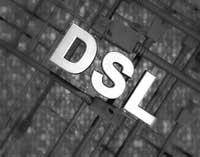SHDSL: Internet faster and faster
Internet technology changes from day to day. Until 9 February, the asymmetric ADSL system (Asymmetric Digital Subscriber Line) was the latest technology in data transmission and reception. However, on that day the International Union of Communications Media established a new standard to streamline the telecarga and facilitate the exchange of large volumes of data, in which network operators had to use the symmetric system SHDSL (Symmetric High Bit Symmetric to offer more efficient services of cubre-rate cubes) and more efficient caves).

The DSL system transforms the telephone lines of the subscriber or the copper pair into high-speed lines. In this way, the user can surf faster over the Internet and can also use more multimedia services such as online games, video conferences, etc. In addition, you can use the phone while browsing the Internet.
To do this, DSL technology, based on the traditional telephone line, creates three independent channels: two high-speed channels, one for data reception and one for data sending, and a channel for the normal phone. In the ADSL system, the data channels are asymmetric, that is, the speed of the data collection channel is higher, since normally the volume of data exchanged in this regard is usually higher. However, in the new SHDSL system, both channels are symmetric, that is, they are high speed and the same. This technology allows data transmission speed between 192 and 312 kbit/s and allows the transmission of T1 (1 544 kbit/s), E1 (2 048 kbit/s), RDSI, ATM and IP signals.





